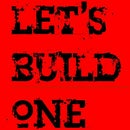Introduction: Steam Turbine, the Easy DIY Way
Heron's steam ball (turbine) made from a tin of condensed milk and some copper pipe.
I designed and built the origional one of these when i was about seven years old and the design hasent changed since. Since it was designed by a seven yr old its simple, debatably free and easy to make.
This is probably the simplest of my creations and all you need to make it is a can of condensed milk and some brake piping you can get free from any local garage.
For More Details Visit My Website at: letsbuildone.wordpress.com
Or Url: https://youtu.be/ebw0emI7FuA
So lets get started.
I designed and built the origional one of these when i was about seven years old and the design hasent changed since. Since it was designed by a seven yr old its simple, debatably free and easy to make.
This is probably the simplest of my creations and all you need to make it is a can of condensed milk and some brake piping you can get free from any local garage.
For More Details Visit My Website at: letsbuildone.wordpress.com
Or Url: https://youtu.be/ebw0emI7FuA
So lets get started.
Step 1: Get Everything You Need Together
Materials Required:
* Soldering Iron.
- A tin can, idealy a normal sized steel condensed milk tin with only one seam which is at the top.
- Some metal tubing, preferably steel or copper. Hydraulics tubing from scrap car suggested.
- Swivel or thread that can be twisted ALOT and hold the weight of a can half filled with water.
* Soldering Iron.
- Something to make approximately 5mm holes with. Drill or large nail will do.
- Hammer if you are using a nail.
- Heat source like a trangia, camping stove or blow torch.
- Potentially a pair of pliers or a vice.
- Pipe bender would be helpful but not required
- Sand paper, scouring pad or brush.
Step 2: Make Two Holes and Empty the Can
Take the label of your tin and make two holes roughly 10mm form the top on opposite sides of the can. to find the oposite sides of the can I used a strip of paper which i wrapped around the can, marked the overlap, folded in half and then wrapped it around the can again and marked the marks on the can.
Then, using a larger nail or such, widen the hole to the desired diameter which is slightly less than that of the pipe so the pipe will be a snug push fit. This will leave a lip on the metal where it was stretched and torn inwards which will make it easier for you to attach your tubes effectively. Now you have two holes in your can on opposite sides empty the contents by squirting water in one hole and the milk will come out the other.
Alternatively you could use a drill. In this case use a centre punch or other sharp ended metallic object to make a dent with a hammer 10mm from the top. Using a drill bit slightly smaller than the outer diameter of your pipe drill a hole through the side using the dent to steady the drill on the round surface.
Then, using a larger nail or such, widen the hole to the desired diameter which is slightly less than that of the pipe so the pipe will be a snug push fit. This will leave a lip on the metal where it was stretched and torn inwards which will make it easier for you to attach your tubes effectively. Now you have two holes in your can on opposite sides empty the contents by squirting water in one hole and the milk will come out the other.
Alternatively you could use a drill. In this case use a centre punch or other sharp ended metallic object to make a dent with a hammer 10mm from the top. Using a drill bit slightly smaller than the outer diameter of your pipe drill a hole through the side using the dent to steady the drill on the round surface.
Step 3: Cut and Bend Your Tubes
Cut two lengths of pipe 115mm long using your pipe cutter, a hack saw or the cutters on pliers and bend one end of the pipe at the end by 90 degrees so the last centimetre of the pipe is perpendicular the main length. This can be achieved by putting two pegs in a piece of wood and putting the pipe in between them then carefully bending the pipe around the peg until the pipe is the desired shape, or use a pipe bender, if you're stuck you could just do it free style with your hands but be careful it's easy to crimp the tube.
Clean your joints so that you will have a good surface to join. Use a fine grain sand paper if available or a scouring pad/ brush if not.
Clean your joints so that you will have a good surface to join. Use a fine grain sand paper if available or a scouring pad/ brush if not.
Step 4: Attach Your Tubes
Get your adhesive ready or your soldering iron warmed up ready for use and push the long end of your bent tube into one of the holes you have made, make sure the end is pointing anti-clockwise and attach it in place. Repeat for other side.
Step 5: Test It
Now just fill with water preferably from the kettle as hot as possible (BE CAREFULL) and attach a piece of steel cable tie or solid core wire to each pipe and bend in the middle so the can is suspended from a point central point. Attach the swivel to said point or make an eyelet by twisting the wire and dangle from the thread/string. Attach the end of the string to something above the stove say a rafter in the garage and light it up! I find a Blow Torch works best but you can use whatever is available.
If you have any acetone or ethanol then you can add roughly 5% to 95% Water which forms an azeotrope and will reduce the boiling point to about 75 degrees celcius, which is good for two reasons. Firstly it takes less time to boil and will boil faster and secondly it will hurt less if you get splashed with some water from inside the can as the liquid will be cooler. Obviously wear relevant safety equipment including safety goggles and protective gloves.
I have almost finished the videos of it in action and when i have uploaded them ill post a link, they will probably be hosted on my website first though at:
http://letsbuildone.110mb.com/
Thanks for Reading and happy building.
If you have any acetone or ethanol then you can add roughly 5% to 95% Water which forms an azeotrope and will reduce the boiling point to about 75 degrees celcius, which is good for two reasons. Firstly it takes less time to boil and will boil faster and secondly it will hurt less if you get splashed with some water from inside the can as the liquid will be cooler. Obviously wear relevant safety equipment including safety goggles and protective gloves.
I have almost finished the videos of it in action and when i have uploaded them ill post a link, they will probably be hosted on my website first though at:
http://letsbuildone.110mb.com/
Thanks for Reading and happy building.






